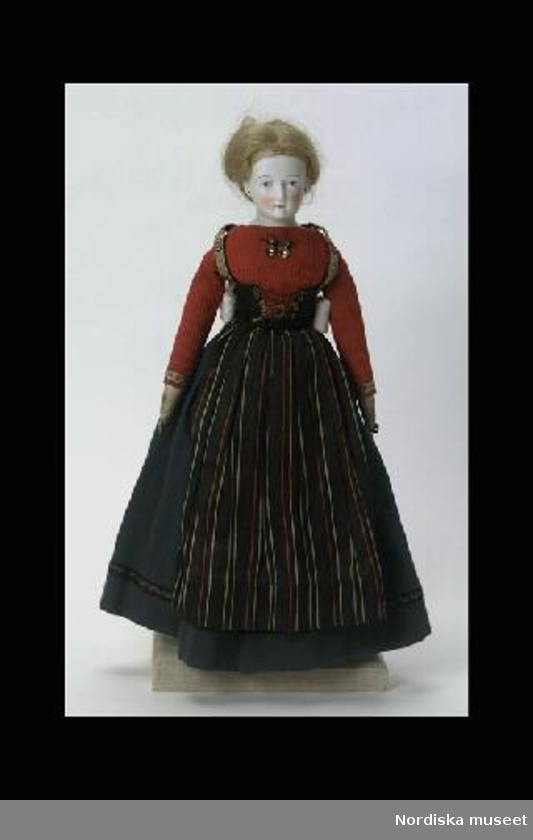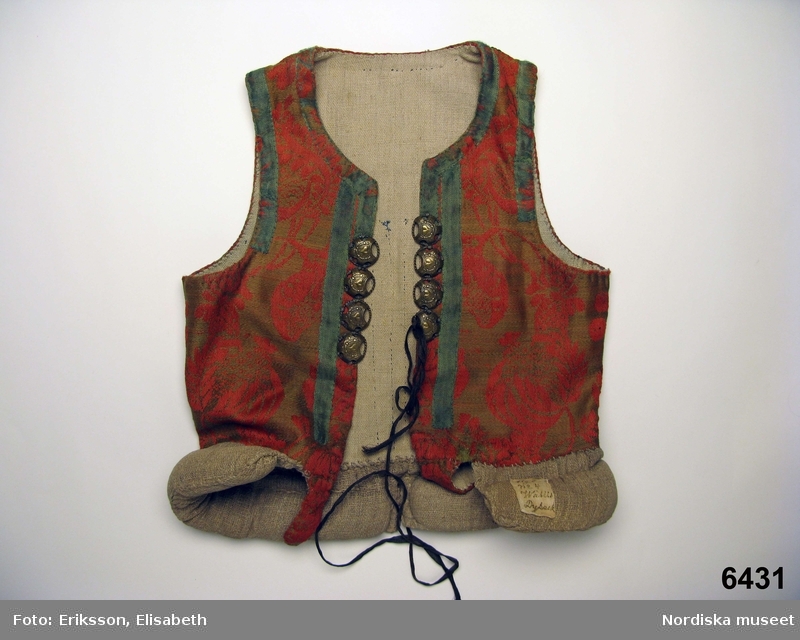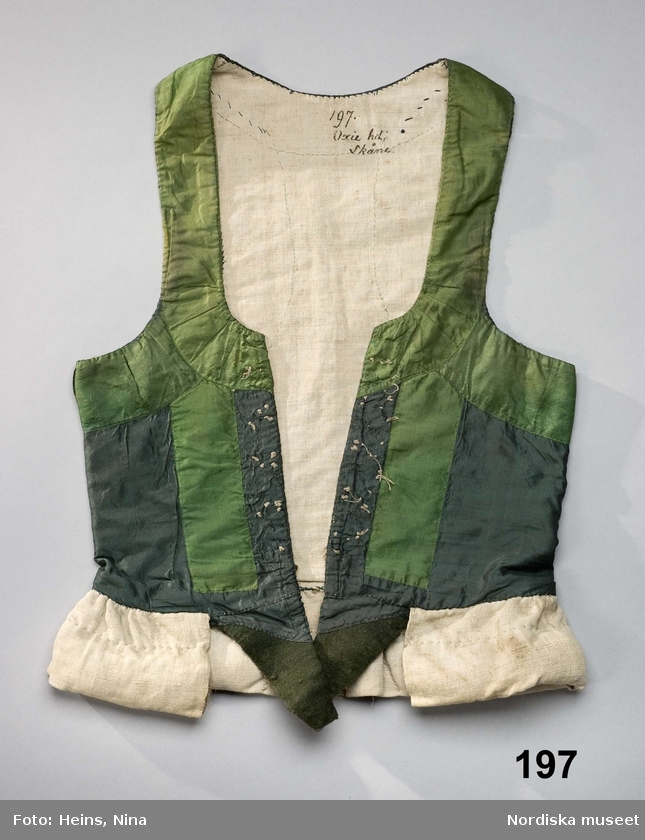Made in 1891, but the costume is from about 1800-60. Headdress missing.
Before I
present the list I will first point out a few things. First, not every location
in Sweden
had a traditional costume, far from it. Actually, most places did not – the
people there wore a local, simpler take on the current fashion. (During the late 19th and long into the 20th century, areas that had no documented folk costumes created their own, sometimes based on one piece of clothing, at other times based on nothing at all but what the comity thought would look nice. In those cases it will of course be impossible to find any solid documentation.)
Second, the
costumes that did exist did not look the same through the centuries or even the
decades – they may have evolved slower than the regular fashions (as a set of
clothing - especially festive clothing - was often supposed to last your whole life, and was frequently inherited by
your children), but they did evolve. When wanting to make a costume you have to
decide on when and where (narrow it down as much as you possibly
can) it’s supposed to be from, so that all the individual garments will make a
proper outfit.
To illustrate how a certain style changed over time while still retaining some of it's characteristics, the pictures in this post are of bodices from the same dräktområde (meaning an area where the costumes where much the same), under close to a hundred years, from about 1770 at the earliest to 1860 at the latest.
Maljor (buckles) for lacing, silk ribbon trim (very frayed)
and a linen valk (the padded roll at the bottom) for the skirts to rest on.
Here’s a
list of names on different garments:
Särk: shift
Strumpor: stockings
Skor: shoes
Liv, livstycke, snörliv: different names for a sleeveless
bodice, laced, buttoned or hooked closed
Kjol, klocka, stubb: different words for skirt or petticoat
Livkjol: a bodice and skirt stitched together, often,
but not always, made from different fabrics
Förkläde: apron
Tröja, kofta: jacket
Mössa, hätta: cap
Klut, huvudduk, huvudkläde: head kerchief
Halskläde: neckerchief
To
complicate matters, Sweden has a lot of different dialects, and so the names of clothing often had local
varieties. I do not have knowledge of them all.
Some words that might be useful regards the materials used in the clothing:
Lin, linne: linen
Bomull: cotton
Ull, ylle: wool
Halvylle, verken: a fabric woven on a linen or cotton warp with
a wool weft
Silke, siden:
silk
Sammet: velvet
Spets: lace
Läder, skinn: leather
Some useful
words describing methods of closing are:
Snörning, snörhål:
lacing, eyelets
Hyska, hyskor: eye,
eyes
Hake, hakar: hook, hooks
Knapp, knappar:
button, buttons
A good
place to start searching is DigitaltMuseum; a database used by several museums, most prominently Nordiska Museet. You can specify your search by period (tidsperiod) or location (ort).
I hope this
quite short list of words may help you in your research. Google Translate will
help you further, but some of the words listed here are a bit too specialized
for that. If there’s a word you wonder about, please drop me a comment and I’ll
include it in the list if I can.






This comment has been removed by a blog administrator.
ReplyDelete